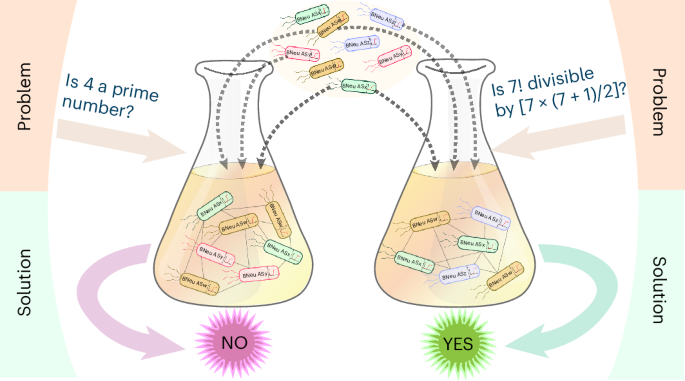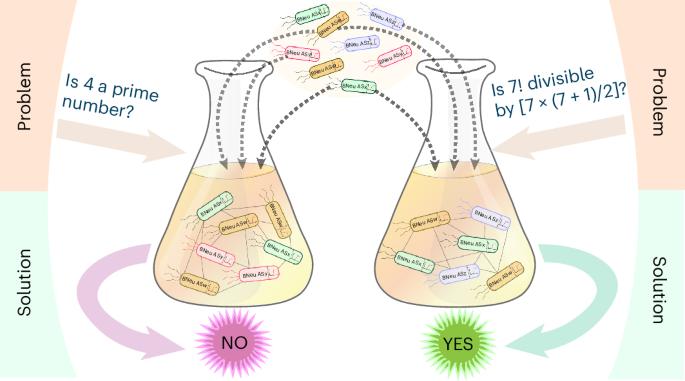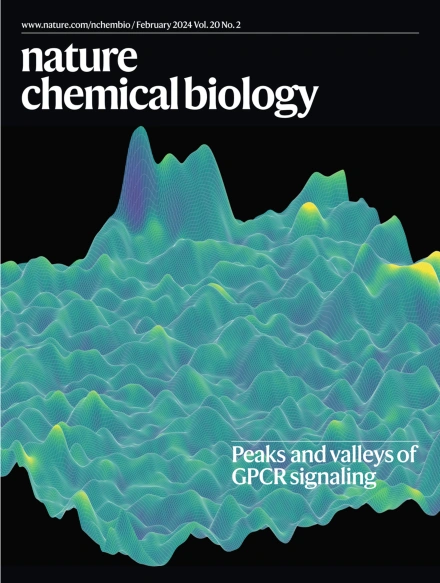Multicellular artificial neural network-type architectures demonstrate computational problem solving
IF 13.7
1区 生物学
Q1 BIOCHEMISTRY & MOLECULAR BIOLOGY
引用次数: 0
Abstract
Here, we report a modular multicellular system created by mixing and matching discrete engineered bacterial cells. This system can be designed to solve multiple computational decision problems. The modular system is based on a set of engineered bacteria that are modeled as an ‘artificial neurosynapse’ that, in a coculture, formed a single-layer artificial neural network-type architecture that can perform computational tasks. As a demonstration, we constructed devices that function as a full subtractor and a full adder. The system is also capable of solving problems such as determining if a number between 0 and 9 is a prime number and if a letter between A and L is a vowel. Finally, we built a system that determines the maximum number of pieces of a pie that can be made for a given number of straight cuts. This work may have importance in biocomputer technology development and multicellular synthetic biology. A modular multicellular system has been created by mixing and matching discrete engineered bacterial cells in an artificial neural network-type architecture. The system is capable of solving multiple computational decision problems like identifying a number as prime and a letter as a vowel.


多细胞人工神经网络型架构展示计算问题解决方法
在这里,我们报告了一种通过混合和匹配离散工程细菌细胞而创建的模块化多细胞系统。该系统可用于解决多种计算决策问题。该模块化系统基于一组被模拟为 "人工神经突触 "的工程细菌,它们在共培养过程中形成了一个可执行计算任务的单层人工神经网络型结构。作为演示,我们构建了具有全减法器和全加法器功能的装置。该系统还能解决一些问题,如判断 0 到 9 之间的数字是否为质数,以及 A 到 L 之间的字母是否为元音。最后,我们建立了一个系统,它能确定在给定的直切次数下,最多能做出多少块馅饼。这项工作可能对生物计算机技术发展和多细胞合成生物学具有重要意义。
本文章由计算机程序翻译,如有差异,请以英文原文为准。
求助全文
约1分钟内获得全文
求助全文
来源期刊

Nature chemical biology
生物-生化与分子生物学
CiteScore
23.90
自引率
1.40%
发文量
238
审稿时长
12 months
期刊介绍:
Nature Chemical Biology stands as an esteemed international monthly journal, offering a prominent platform for the chemical biology community to showcase top-tier original research and commentary. Operating at the crossroads of chemistry, biology, and related disciplines, chemical biology utilizes scientific ideas and approaches to comprehend and manipulate biological systems with molecular precision.
The journal embraces contributions from the growing community of chemical biologists, encompassing insights from chemists applying principles and tools to biological inquiries and biologists striving to comprehend and control molecular-level biological processes. We prioritize studies unveiling significant conceptual or practical advancements in areas where chemistry and biology intersect, emphasizing basic research, especially those reporting novel chemical or biological tools and offering profound molecular-level insights into underlying biological mechanisms.
Nature Chemical Biology also welcomes manuscripts describing applied molecular studies at the chemistry-biology interface due to the broad utility of chemical biology approaches in manipulating or engineering biological systems. Irrespective of scientific focus, we actively seek submissions that creatively blend chemistry and biology, particularly those providing substantial conceptual or methodological breakthroughs with the potential to open innovative research avenues. The journal maintains a robust and impartial review process, emphasizing thorough chemical and biological characterization.
 求助内容:
求助内容: 应助结果提醒方式:
应助结果提醒方式:


